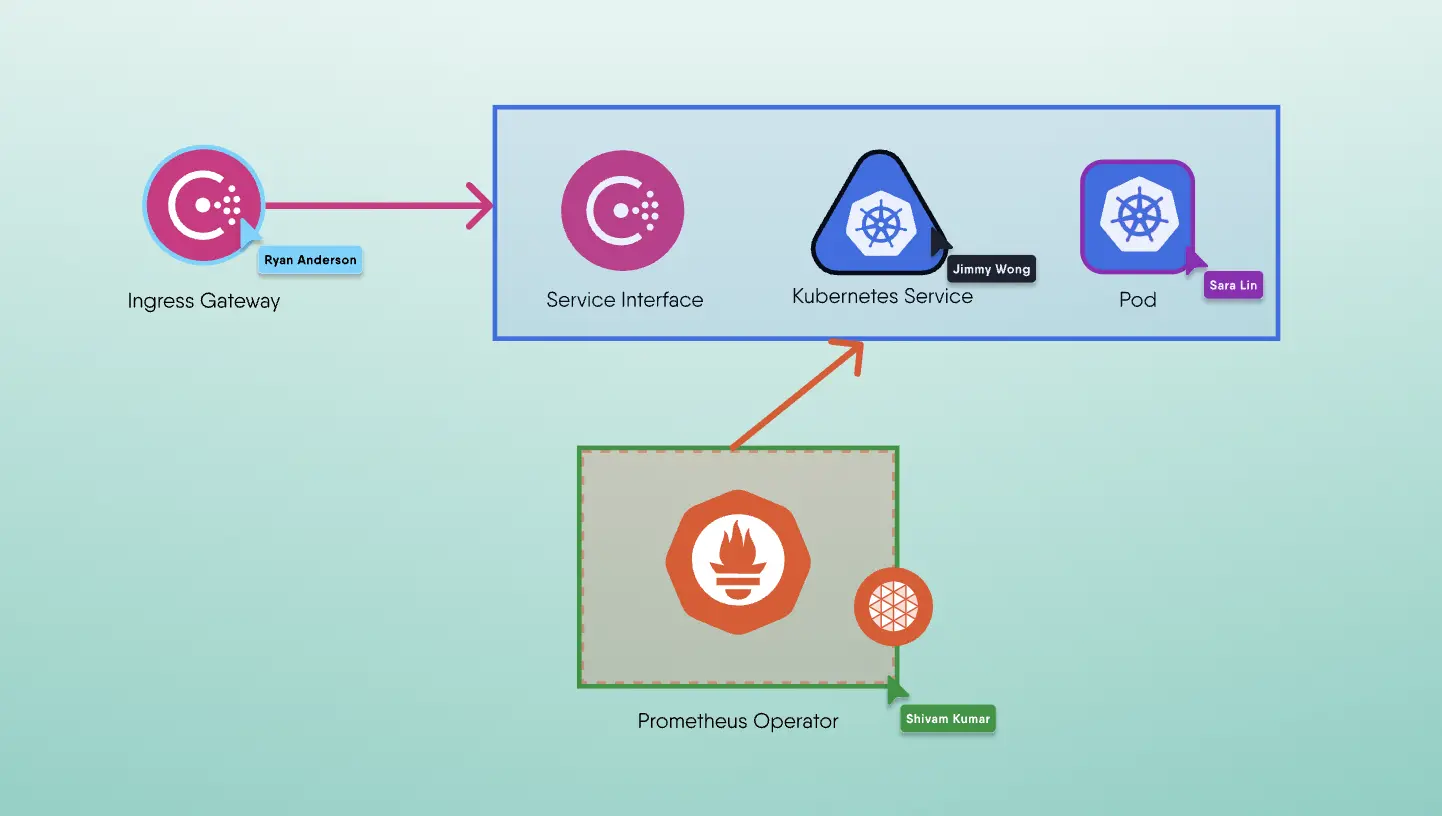In today's fast-paced and interconnected world, the success of many businesses depends heavily on technology platforms that enable them to deliver their products and services efficiently. Platform engineering plays a crucial role in the development, operation, and maintenance of these platforms, ensuring their stability, scalability, and security.
In this article, we will explore the fundamentals of platform engineering, providing a comprehensive overview of the key concepts, benefits, and challenges associated with this field. We will delve into the process of designing and building a platform, discussing the identification of requirements, architectural considerations, and the tools and technologies that facilitate platform development. Additionally, we will explore the critical aspects of operating and maintaining a platform, including managing infrastructure, monitoring performance, and ensuring security and compliance.
By understanding the intricacies of platform engineering, businesses and technology professionals can effectively leverage the power of platforms to drive innovation, enhance customer experiences, and achieve their organizational goals. Whether you are a software engineer, a platform architect, or a business leader, this article will provide valuable insights into the world of platform engineering and equip you with the knowledge required to navigate this ever-evolving landscape.
Fundamentals of Platform Engineering
Platform engineering is a rapidly evolving discipline that plays a crucial role in the development and success of modern software systems. In this section, we will explore the fundamentals of platform engineering, including its definition, importance, key concepts, and the benefits and challenges associated with it.
Definition and Importance of Platform Engineering
Platform engineering can be defined as the process of designing, building, and maintaining a stable and scalable foundation upon which software applications and services can be developed, deployed, and operated. It involves creating a set of reusable and customizable components, tools, and frameworks that enable developers to build and deploy applications with greater efficiency and speed.
The importance of platform engineering cannot be overstated. A well-designed platform provides a solid foundation for software development, allowing organizations to deliver high-quality applications that meet the needs of their users. By creating a standardized set of tools, processes, and best practices, platform engineering ensures consistency and reduces the time and effort required to develop, deploy, and maintain software systems.
Key Concepts in Platform Engineering
To understand platform engineering better, it is essential to familiarize ourselves with some key concepts. These concepts include:
Modularity: Platforms are designed to be modular, with components that can be easily added, removed, or replaced. This modularity enables flexibility and adaptability, allowing for the rapid development and integration of new features and functionalities.
Scalability: A well-designed platform can handle increased workloads and user demands without sacrificing performance. Scalability involves the ability to add resources, such as servers or processing power, to meet growing demands and ensure optimal system performance.
Extensibility: Platforms should be designed to accommodate future growth and evolution. They should provide the necessary flexibility to integrate new technologies, frameworks, and tools as they emerge, allowing developers to stay ahead of the curve and leverage the latest advancements. Learn about Meshery's extensibility.
Benefits and Challenges of Platform Engineering
Platform engineering offers numerous benefits to organizations, including:
Increased development speed: By providing reusable components and standardized processes, platforms enable developers to build applications more quickly, reducing time-to-market and increasing productivity.
Improved collaboration: Platforms foster collaboration by providing a shared framework and tools that allow developers to work together seamlessly. This collaborative environment promotes knowledge sharing, reduces duplication of effort, and facilitates efficient problem-solving.
Cost savings: Building on a solid platform foundation reduces development costs by eliminating the need to reinvent the wheel for each application. Additionally, platforms enable organizations to leverage economies of scale by sharing resources and infrastructure across multiple applications.
However, platform engineering also presents its own set of challenges, including:
Complexity: Building and maintaining a platform can be complex due to the interdependencies between various components and the need for integration with other systems. It requires a deep understanding of the underlying technologies and the ability to manage and mitigate potential risks and issues.
Continuous evolution: Platforms need to evolve continuously to keep up with changing technologies and user needs. This requires a proactive approach to stay updated with emerging trends, evaluate new tools and frameworks, and invest in ongoing maintenance and upgrades.
In the next section, we will delve into the process of designing and building a platform, exploring the key considerations, requirements, and tools involved in the platform engineering journey.

Designing and Building a Platform
Designing and building a platform is a crucial step in platform engineering. It requires careful consideration of various factors to ensure a robust and scalable infrastructure that meets the needs of the organization and its users. In this section, we will explore the key aspects of designing and building a platform, including identifying platform requirements, architectural considerations, and the tools and technologies involved in platform development.
Identifying Platform Requirements
Before starting the design and development process, it is essential to identify the specific requirements of the platform. This involves understanding the goals and objectives of the platform, as well as the target audience and their needs. By clearly defining the requirements, platform engineers can make informed decisions throughout the development process.
Platform requirements can vary significantly depending on the industry and organization. For example, an e-commerce platform may need to handle high volumes of traffic and transactions, while a healthcare platform may require stringent security and privacy measures. It is important to consider factors such as scalability, performance, security, integration capabilities, and user experience when determining the platform requirements.
Architectural Considerations for Platform Design
Once the requirements are in place, the next step is to determine the architectural design of the platform. The architecture serves as the blueprint for the platform and guides the development process. It defines the structure, components, and interactions within the platform.
There are various architectural patterns to consider, such as monolithic, microservices, serverless, and container-based architectures. Each pattern has its own advantages and trade-offs, and the choice depends on factors like scalability, flexibility, maintainability, and cost.
Additionally, platform engineers need to consider factors such as data storage and management, communication protocols, integration with external systems, and fault tolerance. These considerations ensure that the platform is designed to handle the expected workload and can adapt to future needs.
Tools and Technologies for Platform Development
Designing and building a platform requires the use of various tools and technologies that facilitate the development process. These tools range from integrated development environments (IDEs) to version control systems, testing frameworks, and deployment automation tools.
Depending on the chosen architecture and requirements, platform engineers may utilize technologies like cloud computing platforms, containerization technologies like Docker and Kubernetes, programming languages such as Java, Python, or JavaScript, and frameworks like Spring Boot or Node.js.
It is crucial for platform engineers to stay updated with the latest tools and technologies in the industry. This enables them to leverage the most efficient and effective solutions for platform development, ensuring optimal performance, scalability, and maintainability.
By carefully considering platform requirements, architectural design, and utilizing appropriate tools and technologies, platform engineers can build a robust and scalable platform that meets the organization's needs. In the next section, we will explore the operational aspects of platform engineering.
Operating and Maintaining a Platform
Operating and maintaining a platform is crucial for ensuring its continued functionality, scalability, and security. This section will explore the key aspects of managing a platform's infrastructure, monitoring its performance, and ensuring security and compliance in its operations.
Managing Platform Infrastructure
Managing the infrastructure of a platform involves various tasks, such as provisioning and configuring servers, managing databases, and deploying software updates. It is essential to have a robust infrastructure management strategy to ensure the platform's stability and availability.
One of the key considerations in managing platform infrastructure is scalability. As the platform grows and user demands increase, the infrastructure must be able to handle the load efficiently. This may involve scaling up the existing infrastructure or adopting cloud-based solutions to ensure flexibility and elasticity.
Moreover, effective resource allocation is critical for optimizing platform performance and cost-efficiency. By monitoring resource utilization and performance metrics, platform engineers can identify bottlenecks and allocate resources accordingly, ensuring optimal use of available infrastructure.
Platform Monitoring and Performance Optimization
Monitoring the platform's performance is essential for identifying and resolving issues proactively. Platform engineers employ various monitoring tools and techniques to track key performance indicators, such as response time, resource utilization, and availability.
Real-time monitoring enables the early detection of performance degradation or system failures, allowing platform engineers to take immediate action to mitigate the impact on users. Moreover, historical performance data can provide valuable insights for capacity planning and future optimizations.
Performance optimization involves fine-tuning the platform to enhance its efficiency and responsiveness. This may include optimizing database queries, improving caching mechanisms, or implementing load balancing techniques. Regular performance testing and profiling can uncover potential bottlenecks and guide optimization efforts.
Ensuring Security and Compliance in Platform Operations
Security and compliance are paramount in platform operations, especially when dealing with sensitive data or regulated industries. Platform engineers must implement robust security measures to protect the platform and its users from potential threats.
This may involve implementing secure authentication and authorization mechanisms, encrypting data in transit and at rest, and regularly patching and updating software components to address security vulnerabilities. Additionally, platform engineers should establish strict access control policies and regularly audit system logs for any suspicious activities.
Compliance with industry regulations and standards is also essential for platform operations. Platform engineers must stay updated with the latest compliance requirements and ensure that the platform meets the necessary standards. This may involve conducting regular audits, documenting compliance processes, and implementing necessary controls.
Conclusion
Operating and maintaining a platform requires diligent attention to infrastructure management, performance monitoring, and security and compliance practices. By focusing on these key aspects, platform engineers can ensure the platform's stability, scalability, and data integrity, ultimately providing a reliable and secure experience for users.
In conclusion, platform engineering plays a crucial role in the development and success of any digital product or service. By providing a robust and scalable foundation, platform engineering enables organizations to accelerate their innovation, streamline operations, and enhance customer experiences.
Throughout this article, we have explored the fundamentals of platform engineering, including its definition, importance, and key concepts. We have also discussed the benefits and challenges associated with platform engineering, recognizing that while it offers numerous advantages, it requires careful planning, design, and maintenance.
Designing and building a platform necessitates a thorough understanding of the requirements and architectural considerations. By leveraging the right tools and technologies, organizations can create a platform that aligns with their goals and objectives, while also ensuring flexibility and scalability to accommodate future growth.
Operating and maintaining a platform demands ongoing management of the infrastructure, including continuous monitoring and performance optimization. Organizations must also prioritize security and compliance to safeguard sensitive data and ensure regulatory adherence.
Platform engineering is a dynamic and ever-evolving field, driven by the rapid advancements in technology and the changing needs of businesses and consumers. As organizations embrace digital transformation and seek to stay competitive in the digital age, platform engineering will continue to play a pivotal role in delivering innovative solutions and driving business success.
In summary, platform engineering is the backbone of modern-day digital products and services. It empowers organizations to build, operate, and maintain robust platforms that can support their business objectives, enhance customer experiences, and drive growth. By understanding the fundamentals, embracing best practices, and staying abreast of emerging trends, organizations can leverage platform engineering to unlock their full potential in an increasingly digital world.
Team

